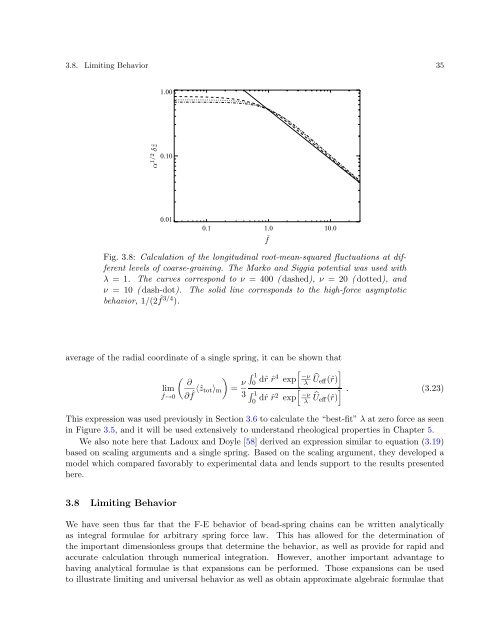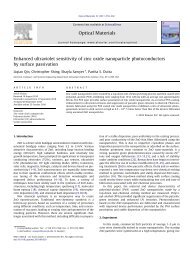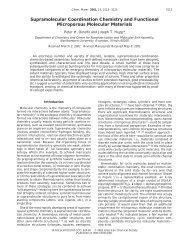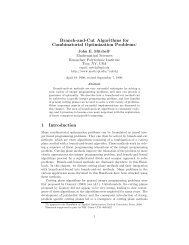Systematic development of coarse-grained polymer models Patrick ...
Systematic development of coarse-grained polymer models Patrick ...
Systematic development of coarse-grained polymer models Patrick ...
You also want an ePaper? Increase the reach of your titles
YUMPU automatically turns print PDFs into web optimized ePapers that Google loves.
3.8. Limiting Behavior 35<br />
α 1/2 δˆz<br />
1.00<br />
0.10<br />
0.01<br />
0.1 1.0<br />
ˆf<br />
10.0<br />
Fig. 3.8: Calculation <strong>of</strong> the longitudinal root-mean-squared fluctuations at different<br />
levels <strong>of</strong> <strong>coarse</strong>-graining. The Marko and Siggia potential was used with<br />
λ =1. The curves correspond to ν = 400 ( dashed), ν =20( dotted), and<br />
ν =10( dash-dot). The solid line corresponds to the high-force asymptotic<br />
behavior, 1/(2 ˆ f 3/4 ).<br />
average <strong>of</strong> the radial coordinate <strong>of</strong> a single spring, it can be shown that<br />
<br />
∂<br />
lim<br />
ˆf→0 ∂ ˆ f 〈ˆztot〉m<br />
<br />
= ν<br />
1<br />
0<br />
3<br />
dˆr ˆr4 <br />
−ν exp λ <br />
Ueff(ˆr)<br />
<br />
−ν<br />
λ . (3.23)<br />
Ueff(ˆr)<br />
1<br />
0 dˆr ˆr2 exp<br />
This expression was used previously in Section 3.6 to calculate the “best-fit” λ at zero force as seen<br />
in Figure 3.5, and it will be used extensively to understand rheological properties in Chapter 5.<br />
We also note here that Ladoux and Doyle [58] derived an expression similar to equation (3.19)<br />
based on scaling arguments and a single spring. Based on the scaling argument, they developed a<br />
model which compared favorably to experimental data and lends support to the results presented<br />
here.<br />
3.8 Limiting Behavior<br />
We have seen thus far that the F-E behavior <strong>of</strong> bead-spring chains can be written analytically<br />
as integral formulae for arbitrary spring force law. This has allowed for the determination <strong>of</strong><br />
the important dimensionless groups that determine the behavior, as well as provide for rapid and<br />
accurate calculation through numerical integration. However, another important advantage to<br />
having analytical formulae is that expansions can be performed. Those expansions can be used<br />
to illustrate limiting and universal behavior as well as obtain approximate algebraic formulae that







